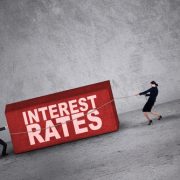Secured and Unsecured Promissory Notes in your Self-Directed IRA: What’s the Difference?
You probably already know that owning alternative assets in your Self-Directed IRA gives you more options and better control over your tax-advantaged portfolio. You also know that it is a smart way to broadly diversify your funds beyond the traditional stocks and bonds that make up the bulk of regular IRAs.
But did you also know that more and more retirement investors are adding promissory notes to their Self-Directed IRAs? A promissory note is simply an investment that entails a legally-binding contract between a lender and a borrower. Your Self-Directed IRA is the lender, and the borrower agrees to repay a certain sum to the IRA within a specific amount of time. As with any loan, if the borrower fails to make the payments, it results in a default.
Promissory notes have been around for centuries, and today they appeal to investors who prefer the reliability of regular cash flow to the unpredictable gyrations of the stock market. In fact, notes usually come with a predetermined payment amount and interest rate.
Promissory notes typically fall into two primary categories: secured and unsecured. Here is more about each of them:
Notes secured by real estate or other property
Some promissory notes are secured by real property, such as mortgage notes and trust deeds. If the borrower defaults, the Self-Directed IRA is entitled to the underlying collateral. The repayment terms are stated in the promissory note. Repayment options might be fixed principal and interest payments amortized over a set term; a balloon payment of both interest and principal; or interest-only payments for a certain period to be followed by a final balloon principal payment.
Notes can also be secured with non-real estate property. Examples of these can include equipment, vehicles, company stock, or even manufactured homes. As with loans secured by real estate, there are repayment options from which to choose, and the terms will be stated in the note.
Unsecured promissory notes
If the borrower does not pledge any collateral to the lender, it is an unsecured promissory note. The loan is made strictly on the borrower’s ability to repay it. Here is an example: Your former college roommate needs a loan. There is no problem with his credit, but he would like a longer payback term than other lenders are willing to give him. He understands he will have to pay a higher interest rate since the loan will not be secured, and he is fine with that. You know him and trust that he will pay back the loan, so you agree to an unsecured promissory note.
Perform due diligence
It makes no difference if the loan is secured or unsecured. You still owe it to your retirement portfolio to perform due diligence. First, do your research on the borrower. Next, ask yourself if the risk you are taking is worth it. Can you envision any future problems with this loan? Are your investment goals being met by the rate of return you will be getting?
You should be asking these questions of any investment you make in your Self-Directed IRA, but it is especially significant when you are taking on the added risk of an unsecured promissory note. Talk with your lawyers, advisors, and any other professionals–such as a title company and servicing agent–with whom you regularly consult just to be sure you are not missing anything. The most trustworthy individuals with the best intentions could unwittingly create problems for your retirement portfolio if you are not cautious.
Add us to your list of professionals
Interested in learning more about Self-Directed IRAs? Contact American IRA, LLC at 866-7500-IRA (472) for a free consultation. Download our free guides or visit us online at www.AmericanIRA.com.



